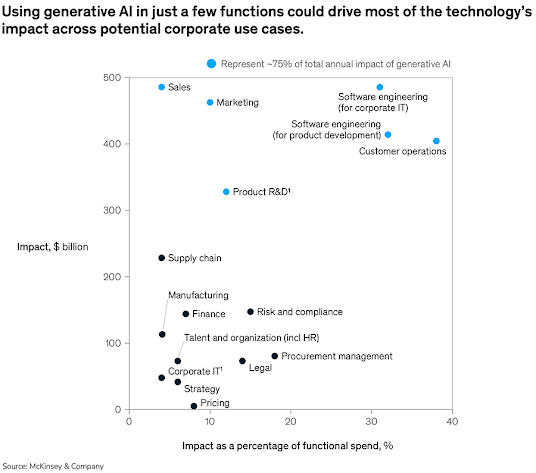Struggling to grow your SaaS business? Discover innovative, actionable strategies to resolve common bottlenecks in technology, alignment, and content. Optimize your organization for growth today.
Is your SaaS company struggling to hit growth targets? You’re not alone. Many B2B SaaS startups face obstacles that slow or even halt their progress. From inefficient marketing strategies to poor alignment between teams, these issues can hold you back from scaling successfully.
This guide tackles the key reasons behind stunted SaaS growth and actionable solutions you can implement right away. By the end, you'll understand the steps to build better strategies, foster alignment, and turn challenges into opportunities for growth.
Understanding the Problem with Your Tech Stack
A Tech Stack Without Purpose
Have you invested in expensive tools that don't deliver the results you expected? This happens when companies adopt shiny, new technologies without assessing their compatibility with existing systems or their marketing maturity level.
Here’s a common scenario:
- A CMO purchases an advanced ABM (Account-Based Marketing) platform taking up a quarter of the marketing budget.
- The team lacks the resources and expertise to integrate and utilize the tool effectively. The project goes over budget, morale drops, and the marketing operations manager eventually quits.
Solution
Before investing in tools, ask:
- What is the maturity level of your marketing technology stack?
- Do we have the skills and resources to implement, use, and maintain this technology?
Consider conducting a technology audit and hiring experienced Marketing Operations professionals who can run these tools effectively. This way, the tech supports your goals instead of becoming a sunk cost.
Misunderstanding Marketing Data and Analytics
Are you running A/B tests that don’t provide clear answers or narrowing ad audiences so much that they underperform? A failure to grasp data speaks directly to a lack of training in analytics within marketing teams.
Marketers don’t need MBAs, but they do need to know how to interpret and leverage data-driven insights accurately.
Solution
- Invest in training for your marketing team on data analytics, tools like Google Analytics, and testing methodologies.
- Use visualization platforms (e.g., Tableau or Power BI) to democratize data insights across teams.
Aligning Sales and Marketing for Growth
Sales and Marketing Misalignment Hinders Success
No matter how impressive your lead scoring or ABM efforts may look on paper, they’ll fail without clear communication between Sales and Marketing teams. Misalignment can lead to duplicate efforts, wasted budgets, and blaming each other when targets aren’t met.
Solution
Start with regular meetings between sales and marketing. Weekly one-on-ones between marketers, salespeople, and senior leadership can break silos and drive collaboration.
- Share success stories of what’s working.
- Be transparent about what’s not working.
- Build trust by creating psychological safety so teams feel free to share vulnerabilities.
Hold Teams Accountable with an SLA
Implementing a Service-Level Agreement (SLA) sets clear expectations and accountability for both teams:
- Marketing promises: A set number of qualified leads delivered within a quarter.
- Sales promises: Contacting those leads within a defined timeframe.
A sample SLA:
“Marketing will deliver 200 qualified leads per month. Sales will follow up with each lead within 48 hours of receiving them.”
The result? Mutual accountability and shared ownership of revenue goals.
The Power of Strong Content Strategies
Unfocused Content and Targeting
With AI advancing content creation, the problem is no longer about generating enough content but ensuring it’s relevant and targeted. Poorly strategized content wastes resources and fails to engage prospects.
Solution
Create buyer personas to deeply understand your audience:
- What are their biggest challenges?
- What are their goals?
- What content formats do they prefer?
Work with skilled content strategists who not only understand SaaS but also have experience tailoring messaging to different segments. Every piece of content must have a purpose and align with the buyer’s stage in their decision journey.
Poorly Designed Landing Pages
Landing pages are where leads convert. If yours aren’t optimized for engagement, you’re likely losing out. SaaS landing pages should:
- Have a clear value proposition.
- Include social proof (like testimonials or data).
- Guide visitors to a single, compelling call-to-action.
Solution
Hire designers with SaaS experience who can ask thoughtful questions and challenge briefs to improve results. Continuous A/B testing is also key to refining your pages.
Leverage Account-Based Marketing for Precision
Account-Based Marketing (ABM) has gone from niche to mainstream, becoming essential for high-value B2B deals. Unfortunately, many startups fail to implement it effectively, rushing into the process without proper strategy or support.
Solution
To succeed with ABM, ensure your team understands how to combine:
- ABM platforms like Demandbase or Terminus.
- CRM tools such as HubSpot or Salesforce.
- Organic platforms like LinkedIn or Quora for hyper-targeted campaigns.
Combine tools with clear account strategies based on detailed prospect research. ABM isn’t just about having the technology; it’s about using it to prioritize personalized marketing and sales outreach.
Adopt a Culture of Curiosity and Adaptation
The fast changes in marketing and martech are daunting, but staying curious and adopting new trends can yield success. Whether it’s building brand communities or experimenting with AI-driven tools, marketers must consistently evolve alongside the industry.
The Challenge of Passive Marketing Approaches
One recurring issue SaaS startups face is relying too heavily on sales teams and ignoring the importance of skilled marketing. For example, a startup founder who recently hired cold-calling sales reps ended up wasting both money and time. Without marketing strategies that build awareness and trust, sales efforts fall flat.
Solution
Bring in professionals who:
- Understand martech.
- Are adept at innovation and content strategy.
- Know how to guide teams with strategic, high-impact marketing campaigns that ultimately drive revenue.
Become a Growth-Focused Organization
Growth in SaaS isn’t just a result of having a great idea or product. It requires strong processes, alignment, the right tools, and consistent learning. Ensuring sales and marketing work hand-in-hand, analyzing the right data, and targeting your content effectively can help you stay competitive and scale successfully.
Still not sure where to start? Explore B2B SaaS marketing teams that actually drive revenue and bring growth-focused strategies to your SaaS today.













